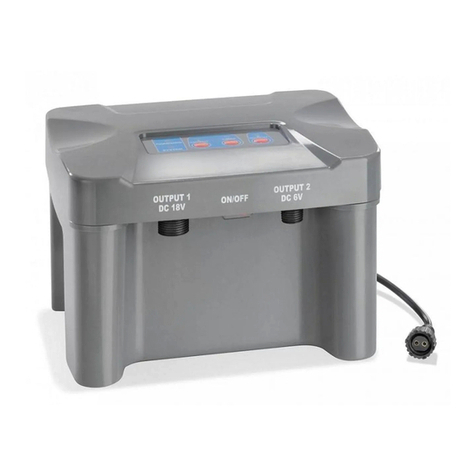PROINSO TRIANGLE User manual

TRIANGLE
INSTALLATION MANUAL

TRIANGLE
2
1. INTRODUCTION 3
2. DESCRIPTION SYSTEM 3
3. MAIN COMPONENTS ARE LISTED BELLOW 4
3.2 Mounting process 4
3.2.1 Assembly of the concrete pads 5
3.2.2 Assembly of structure onto aluminium triangles 6
3.2.3 Junction between aluminium profiles 7
3.2.4 Assembly of PV modules onto aluminium profiles 8
3.2.5 General Considerations 9
4. DO’S AND DON’TS 9
CONTENT:
TRIANGLE INSTALLATION MANUAL
3
1. INTRODUCTION
PROINSO PV RACK offers solutions Structures, MORE ROBUST,
FLEXIBLE, AND MORE COST-EFFECTIVE.
PROINSO PV RACK has been customizing to have an easy assembly
with high quality materials. All our products come in a little box that
contains all items necessary in the installation of the product.
PROINSO PV RACK designed for multiple wind speeds, terrain category
as respective to locations, For higher wind speed, hill side and cyclonic
conditions additional Brackets are suggested for installation.
2. DESCRIPTION SYSTEM
PROINSO PV RACK rooftop PV structures are made of hollowed
aluminum profiles bolted together, with enough ability to support
photovoltaic modules with standard commercial dimensions. These
profiles with the aluminium triangles allow the lifting of the structure
until desired inclination, what allows PROINSO PV RACK adapting
their kits to the majority of existing roofs.
The versatility of the roof system from the PROINSO PV RACK firm
allows an easy adaptation to most locations, complying with the
applicable regulations in each area of installation.
Roof systems from PROINSO PV RACK firm allow a quick assembly. All
elements are easily manipulated by the workshop staff.
Structure systems are made up of 6063-T5 Aluminium and Anchorages
of CORROSHIELD BRAND Self Drilling Screw, which gives a higher
durability to the system.

Spring Nut Mid Clamp End Clamp TriangleFasteners
TRIANGLE
45
3. MAIN COMPONENTS ARE LISTED BELOW :
EACH 1 KW BOX CONTAINS THESE ELEMENTS
3.2 Mounting Process
In order to perform the assembly process, assembly drawings will be
provided by PROINSO PV RACK. Before starting the assembly of the
whole installation, it is recommended to assembly an individual kit in order
to make position marks for the different components. Before starting the
assembly of the structure, it is necessary to check that all required
components and tools are ready to start the process.
All necessary steps for the assembly of the components that make up the
kit, after installing anchorages roof, are described below.
3.2.1 Assembly of the concrete pads:
Previous to the installation of the structure, have to be done a concrete
slabs which dimensions recommended by a local engineer depending
the location of the project. At the same time the concrete is poured an
anchorage should be embedded with the enough distance out of
concrete to permit install the fixed with DIN 6923 M8 A2 nuts. To
install the triangle structure just take screws into the holes prepared
fixed with DIN 6923 M8 A2 nuts.
Correct position for the triangles should be checked in the
corresponding kit drawing.
NEEDED TOOLS AT THIS POINT ARE:
•Open end wrench no 13 or torque wrench with socket no 13.
Lapping plate 40x4
End clamp
Spring nut
Spacer 25x25x3mm
Mounting rail
Bottom angle 50x50x3mm
Top angle 50x50x3mm
Back angle 50x50x3mm
Mid clamp
Cable clip
Allen head M8x25 1B
DIN 933 M8x20 screw
DIN 933 M8x30 screw
DIN 6798 M8 washer
DIN 6923 M8 nut
Allen head M8x35 1B
SS 304
SS 304
SS 304
SS 304
SS 304
SS 304
SS 304
SS 304
AW 6063 T5
AW 6063 T5
AW 6063 T5
AW 6063 T5
AW 6063 T5
AW 6063 T5
AW 6063 T5
AW 6063 T5
Anodized
Anodized
Anodized
Anodized
Anodized
Anodized
Anodized
Anodized
A2
A2
A2
A2
A2
A2
A2
DESCRIPTION MATERIAL COATING

TRIANGLE
67
3.2.2 Assembly of structure onto aluminium
triangles:
The placement of profiles that support PV modules is performed using the
slotted holes the aluminium triangles have at the top part.
In order to assemble the profiles, DIN 933 M8 A2 bolts have to be
introduced in the profile slots as shown in the image and fastened to the
triangles in the correct position through DIN 6923 M8 A2 nuts.
The proper positions for profiles will be at the upper and intermediate
slotted holes as shown in the corresponding kit drawing.
NEEDED TOOLS AT THIS STEP ARE:
•Open end wrench no 13 or torque wrench with socket no 13.
3.2.3 Junction between aluminium profiles:
The joint between two aluminium profiles that form the structure is
performed with an aluminium plate with 4 holes, using 4 DIN 933 M8 A2
bolts and 4 DIN 6923 M8 A2 nuts to secure them as shown in the image.
Firstly, the bolts are inserted loosely in the plate as displayed on the
image. Then, half of the plate is inserted at the end of the first profile,
assuring that two bolts are inserted at the bottom slot. Subsequently,
tighten these two bolts to fix the plate to the first profile.
Secondly, the end of the second profile will be inserted until it stops with
the first one, also guaranteeing that these two bolts are inserted at the
bottom slot. Finally, the proper torque setting to every fastener will be
given.
NEEDED TOOLS AT THIS STEP ARE:
•Open end wrench no 13 or torque wrench with socket no 13.

TRIANGLE
89
3.2.4 Assembly of PV modules onto aluminium
profiles:
Installation of PV modules directly onto aluminium profiles is performed
when the required disposition of PV modules is in portrait.
PV modules will be fixed at 4 attachment points, as shown in the kit
drawing.
The assembly of PV modules is performed with “L” aluminium pieces
(individual fixations), “U” aluminium pieces (double fixations), DIN 912
M8x70 A2 bolts, DIN 6798A M8 A2 washers and M8 A2 spring nuts as
shown in images above.
NEEDED TOOLS AT THIS STEP ARE:
•Hexagonal wrench 6mm.
3.2.5 General considerations:
Torque settings for fasteners:
1. M8 nuts and bolts: 23 Nm.
2. M10 nuts and bolts: 43 Nm.
PV modules attachment points:
Attachment points of PV modules are approximately at ¼ of the longest
side measured from the end of the module, always prevailing
manufacturer recommendations over this issue.
Minimum distances for anchorages position:
The minimum distance to be kept from the end of the aluminium profile to
place any anchorage or fixation is 50mm.
4. DO’S AND DON’TS :
• Installation of PROINSO PV RACK intended to be Performed by
Trained Installers.
•Please Ensure all Safety Equipment shall be use by Installers.
• Please Ensure Substructure , Super Structure of Roof can with stand
load of PROINSO PV RACK and Live load during Installation.
• Do not modify any Product of Proinso PV RACK without any Prior
Approval by Engineers.
•Please follow recommended instructions of solar module
manufacturer during handling and installation.
•Please ensure Solar module can Install on Rail one at a time, Please
take care for slipping of module.

WWW.PROINSOPVRACK.COM
PROINSO HQ
943 Yeovil Road
SL1 4NH Slough
United Kingdom
PROINSO SOUTH ASIA
2-22 Evergreen Industrial
Estate Shakti Mill Lane
Mahalaxmi Mumbai-400011, India
PROINSO AMERICAS
1030 Riverside PKWY
Suite 130 West Sacramento
CA 95605, United States
Table of contents
Popular Solar Panel manuals by other brands
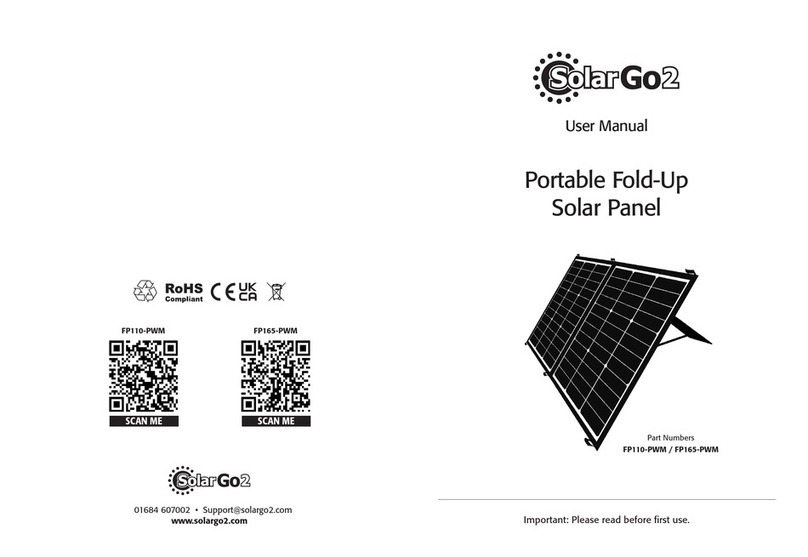
SolarGo2
SolarGo2 FP110-PWM user manual
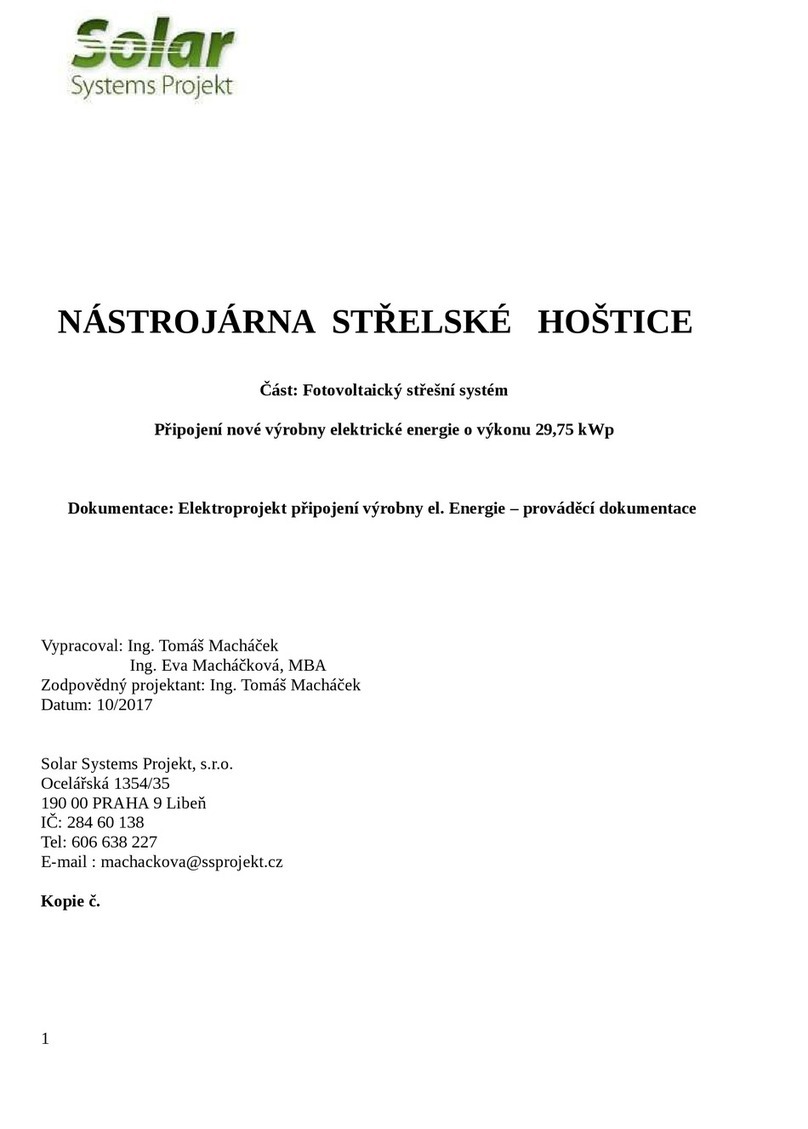
Solar Frontier
Solar Frontier SF135-S Installation and maintenance manual
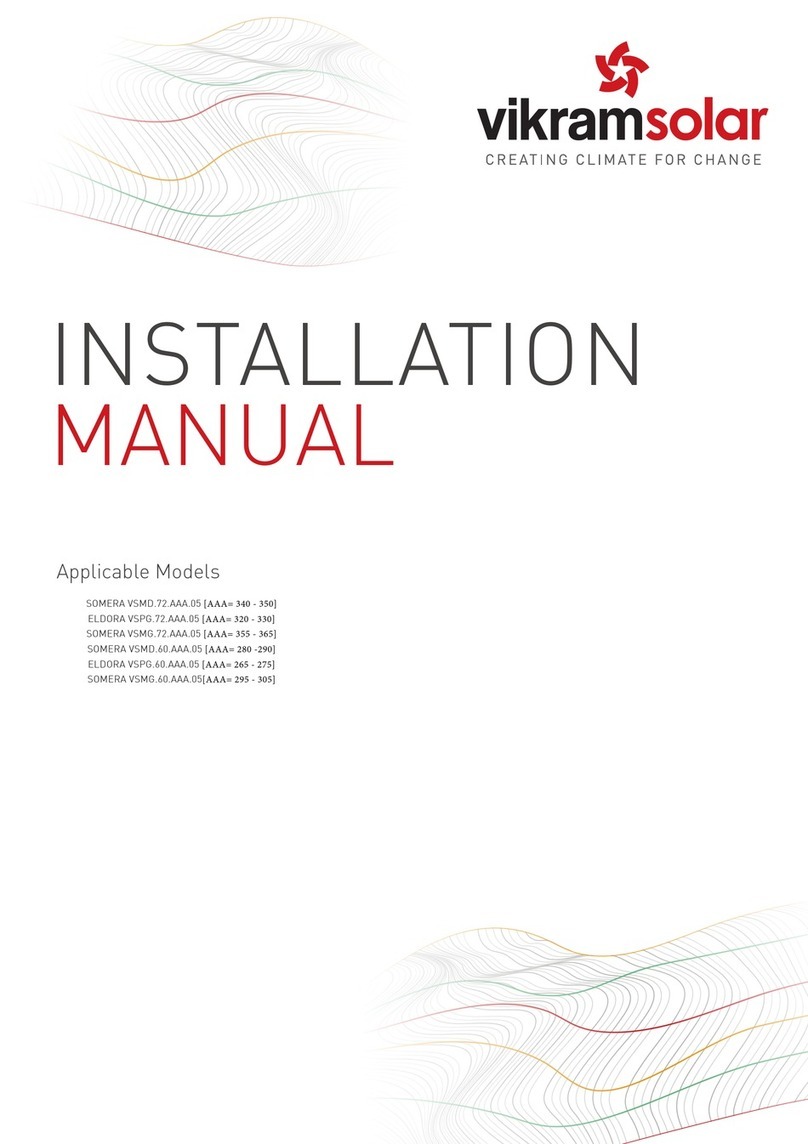
vikram solar
vikram solar SOMERA VSMD.72 Series installation manual
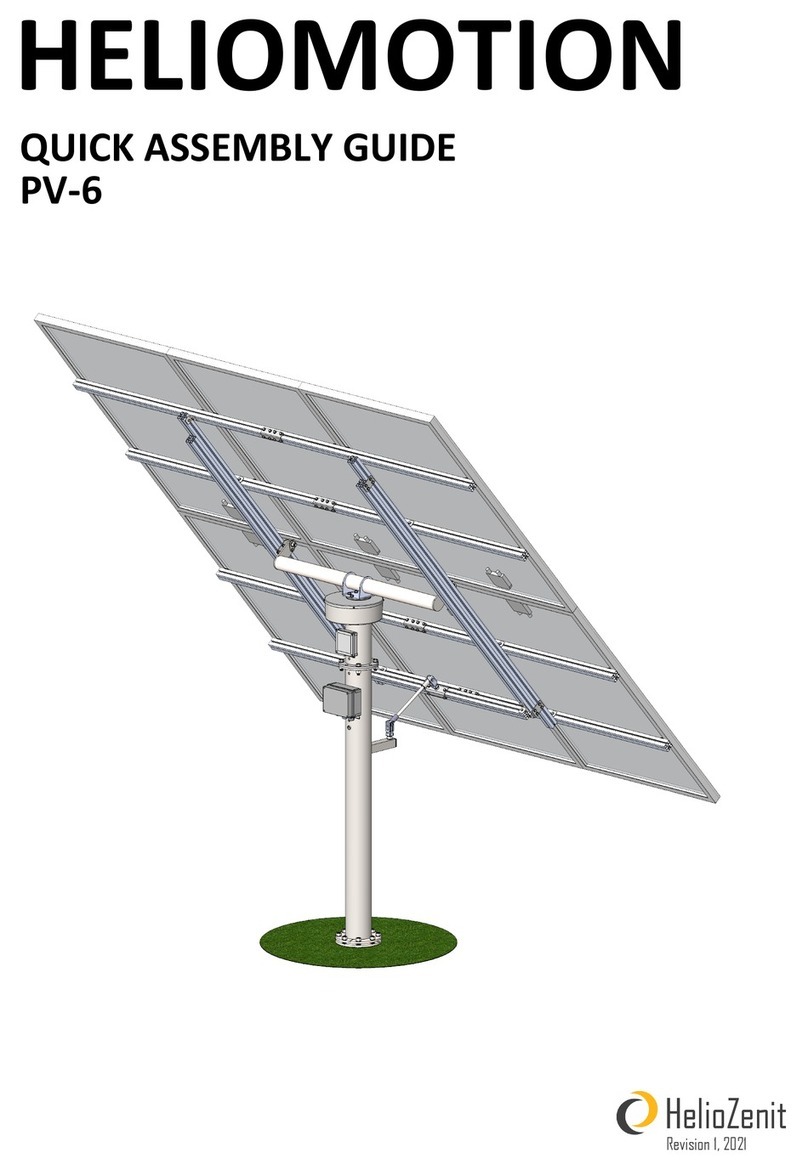
HelioZenit
HelioZenit HELIOMOTION PV-6 Quick assembly guide
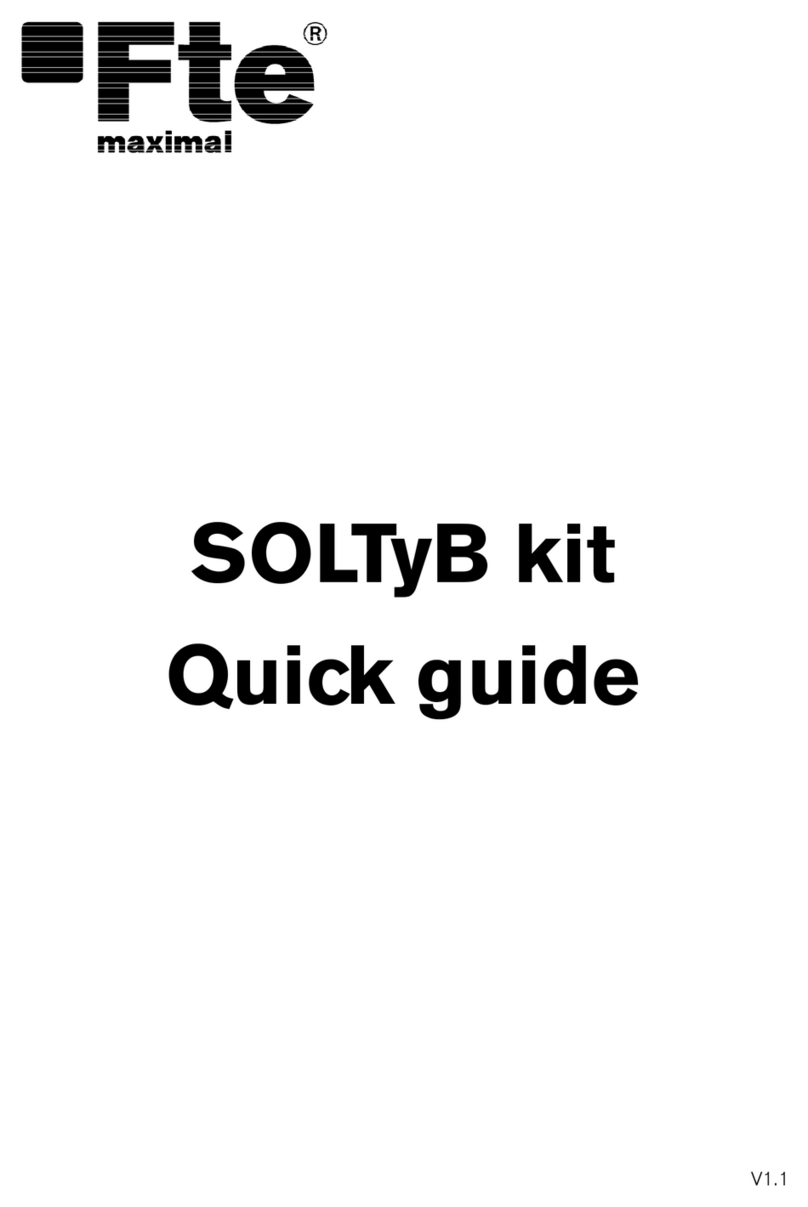
FTE Maximal
FTE Maximal SOLTyB kit quick guide
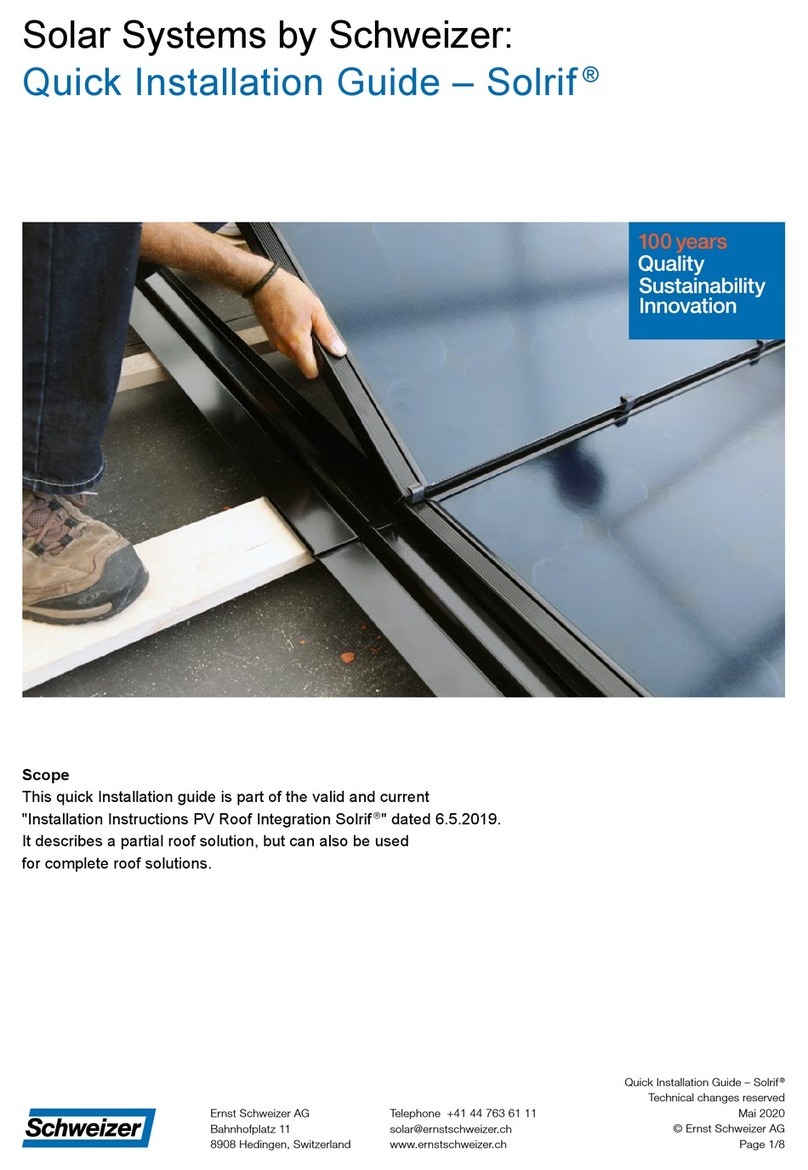
Schweizer
Schweizer Solrif Quick installation guide
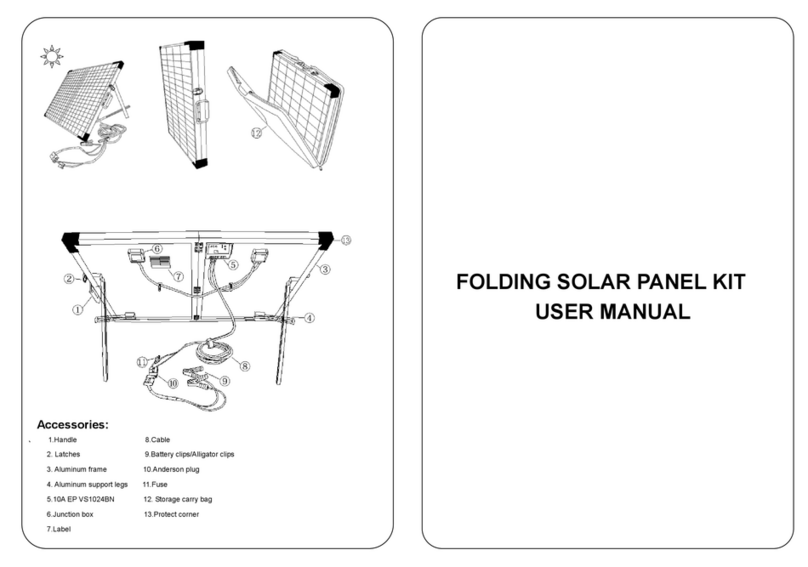
Raygleam
Raygleam FOLDING SOLAR PANEL KIT user manual
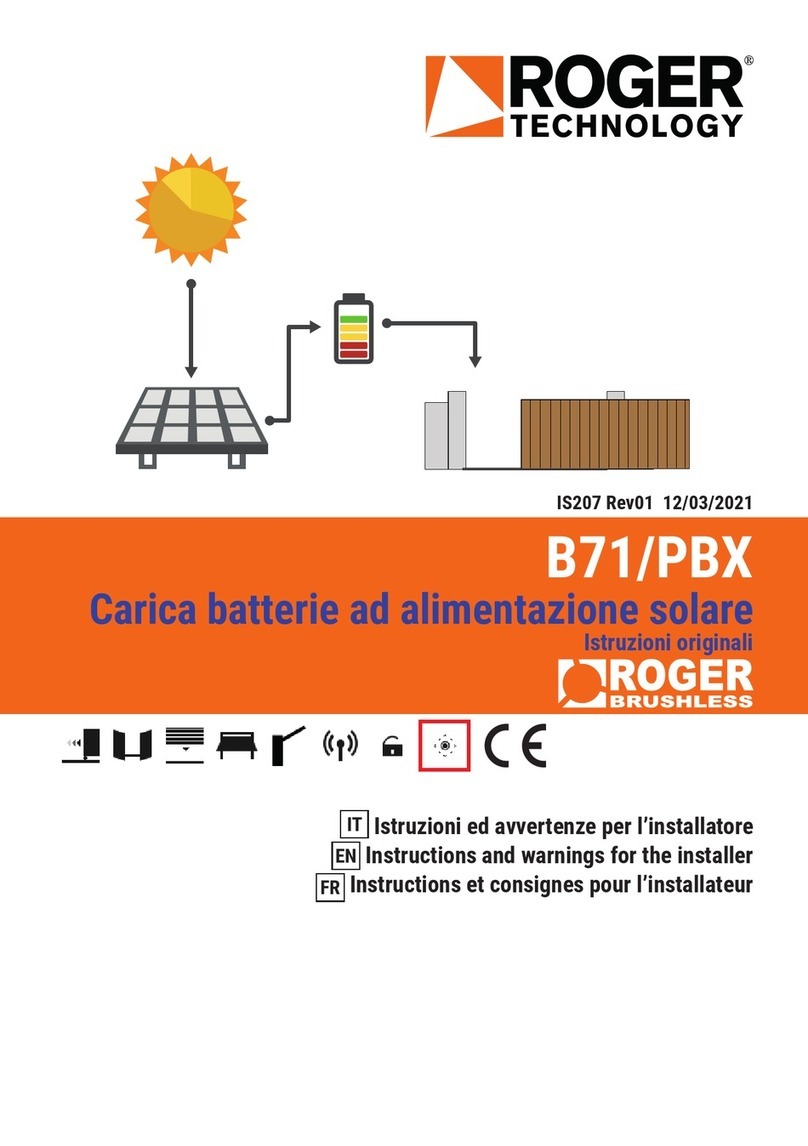
Roger Technology
Roger Technology B71/PBX Instruction and warnings for the installer
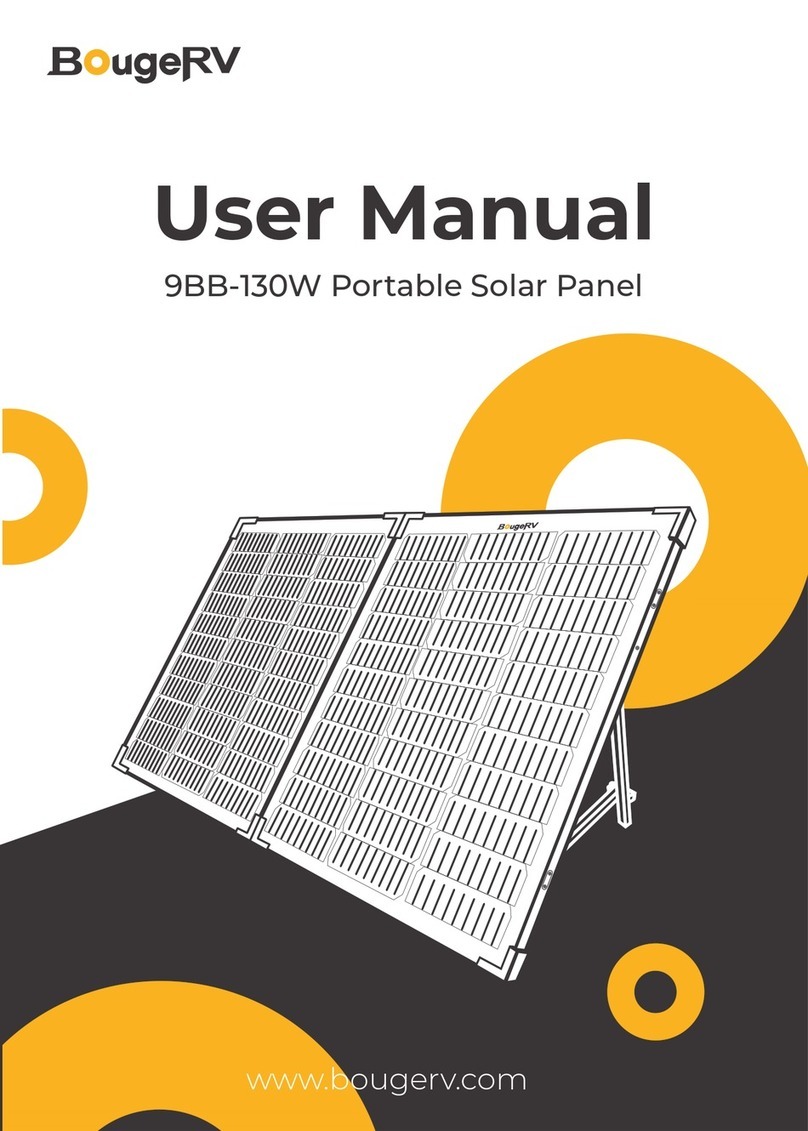
BougeRV
BougeRV 9BB-130W user manual
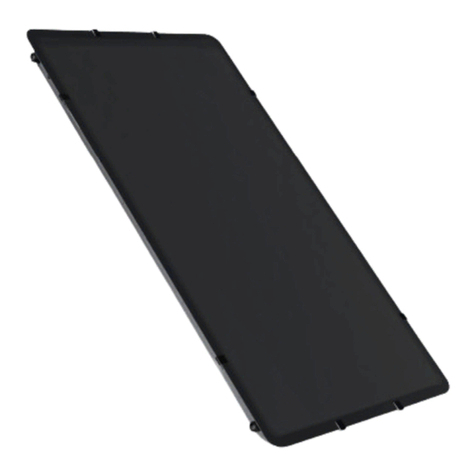
Sonnenkraft
Sonnenkraft SKR500 Series manual
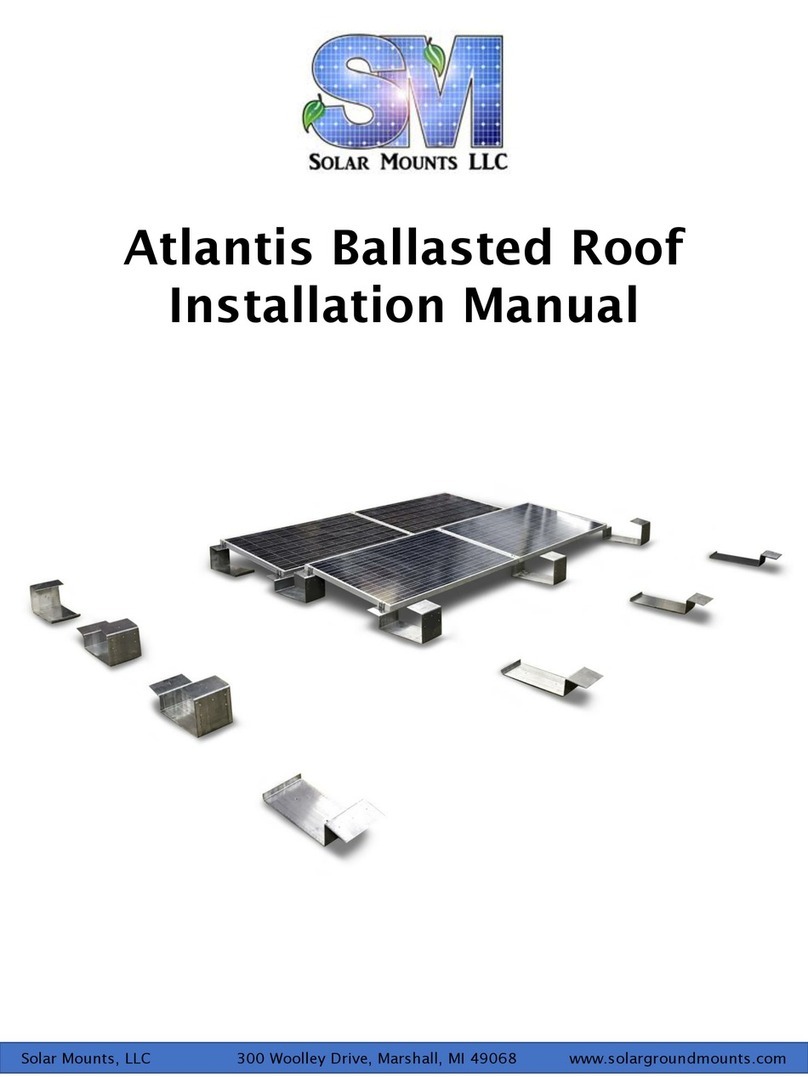
Solar Mounts
Solar Mounts Atlantis installation manual
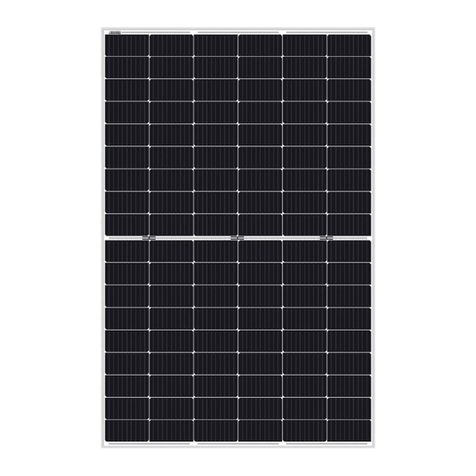
solarwatt
solarwatt Panel vision AM 3.0 installation instructions



